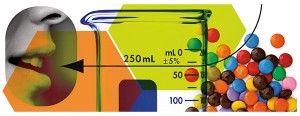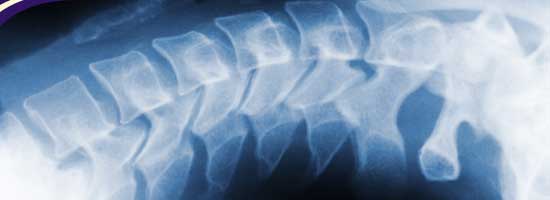How the Food Makers Captured Our Brains
From the New York Times Health Blog:
 As head of the Food and Drug Administration, Dr. David A. Kessler served two presidents and battled Congress and Big Tobacco. But the Harvard-educated pediatrician discovered he was helpless against the forces of a chocolate chip cookie.
As head of the Food and Drug Administration, Dr. David A. Kessler served two presidents and battled Congress and Big Tobacco. But the Harvard-educated pediatrician discovered he was helpless against the forces of a chocolate chip cookie.
In an experiment of one, Dr. Kessler tested his willpower by buying two gooey chocolate chip cookies that he didn’t plan to eat. At home, he found himself staring at the cookies, and even distracted by memories of the chocolate chunks and doughy peaks as he left the room. He left the house, and the cookies remained uneaten. Feeling triumphant, he stopped for coffee, saw cookies on the counter and gobbled one down.
“Why does that chocolate chip cookie have such power over me?” Dr. Kessler asked in an interview. “Is it the cookie, the representation of the cookie in my brain? I spent seven years trying to figure out the answer.”
The result of Dr. Kessler’s quest is a fascinating new book, “The End of Overeating: Taking Control of the Insatiable American Appetite” (Rodale).
During his time at the Food and Drug Administration, Dr. Kessler maintained a high profile, streamlining the agency, pushing for faster approval of drugs and overseeing the creation of the standardized nutrition label on food packaging. But Dr. Kessler is perhaps best known for his efforts to investigate and regulate the tobacco industry, and his accusation that cigarette makers intentionally manipulated nicotine content to make their products more addictive.
In “The End of Overeating,” Dr. Kessler finds some similarities in the food industry, which has combined and created foods in a way that taps into our brain circuitry and stimulates our desire for more.
When it comes to stimulating our brains, Dr. Kessler noted, individual ingredients aren’t particularly potent. But by combining fats, sugar and salt in innumerable ways, food makers have essentially tapped into the brain’s reward system, creating a feedback loop that stimulates our desire to eat and leaves us wanting more and more even when we’re full.
Dr. Kessler isn’t convinced that food makers fully understand the neuroscience of the forces they have unleashed, but food companies certainly understand human behavior, taste preferences and desire. In fact, he offers descriptions of how restaurants and food makers manipulate ingredients to reach the aptly named “bliss point.” Foods that contain too little or too much sugar, fat or salt are either bland or overwhelming. But food scientists work hard to reach the precise point at which we derive the greatest pleasure from fat, sugar and salt.
The result is that chain restaurants like Chili’s cook up “hyper-palatable food that requires little chewing and goes down easily,” he notes. And Dr. Kessler reports that the Snickers bar, for instance, is “extraordinarily well engineered.” As we chew it, the sugar dissolves, the fat melts and the caramel traps the peanuts so the entire combination of flavors is blissfully experienced in the mouth at the same time.
Foods rich in sugar and fat are relatively recent arrivals on the food landscape, Dr. Kessler noted. But today, foods are more than just a combination of ingredients. They are highly complex creations, loaded up with layer upon layer of stimulating tastes that result in a multisensory experience for the brain. Food companies “design food for irresistibility,” Dr. Kessler noted. “It’s been part of their business plans.”
But this book is less an exposé about the food industry and more an exploration of us. “My real goal is, How do you explain to people what’s going on with them?” Dr. Kessler said. “Nobody has ever explained to people how their brains have been captured.”
The book, a New York Times best seller, includes Dr. Kessler’s own candid admission that he struggles with overeating.
“I wouldn’t have been as interested in the question of why we can’t resist food if I didn’t have it myself,” he said. “I gained and lost my body weight several times over. I have suits in every size.”
This is not a diet book, but Dr. Kessler devotes a sizable section to “food rehab,” offering practical advice for using the science of overeating to our advantage, so that we begin to think differently about food and take back control of our eating habits.
One of his main messages is that overeating is not due to an absence of willpower, but a biological challenge made more difficult by the overstimulating food environment that surrounds us. “Conditioned hypereating” is a chronic problem that is made worse by dieting and needs to be managed rather than cured, he said. And while lapses are inevitable, Dr. Kessler outlines several strategies that address the behavioral, cognitive and nutritional factors that fuel overeating.
Planned and structured eating and understanding your personal food triggers are essential. In addition, educating yourself about food can help alter your perceptions about what types of food are desirable. Just as many of us now find cigarettes repulsive, Dr. Kessler argues that we can also undergo similar “perceptual shifts” about large portion sizes and processed foods. For instance, he notes that when people who once loved to eat steak become vegetarians, they typically begin to view animal protein as disgusting.
The advice is certainly not a quick fix or a guarantee, but Dr. Kessler said that educating himself in the course of writing the book had helped him gain control over his eating.
“For the first time in my life, I can keep my weight relatively stable,” he said. “Now, if you stress me and fatigue me and put me in an airport and the plane is seven hours late – I’m still going to grab those chocolate-covered pretzels. The old circuitry will still show its head.”
